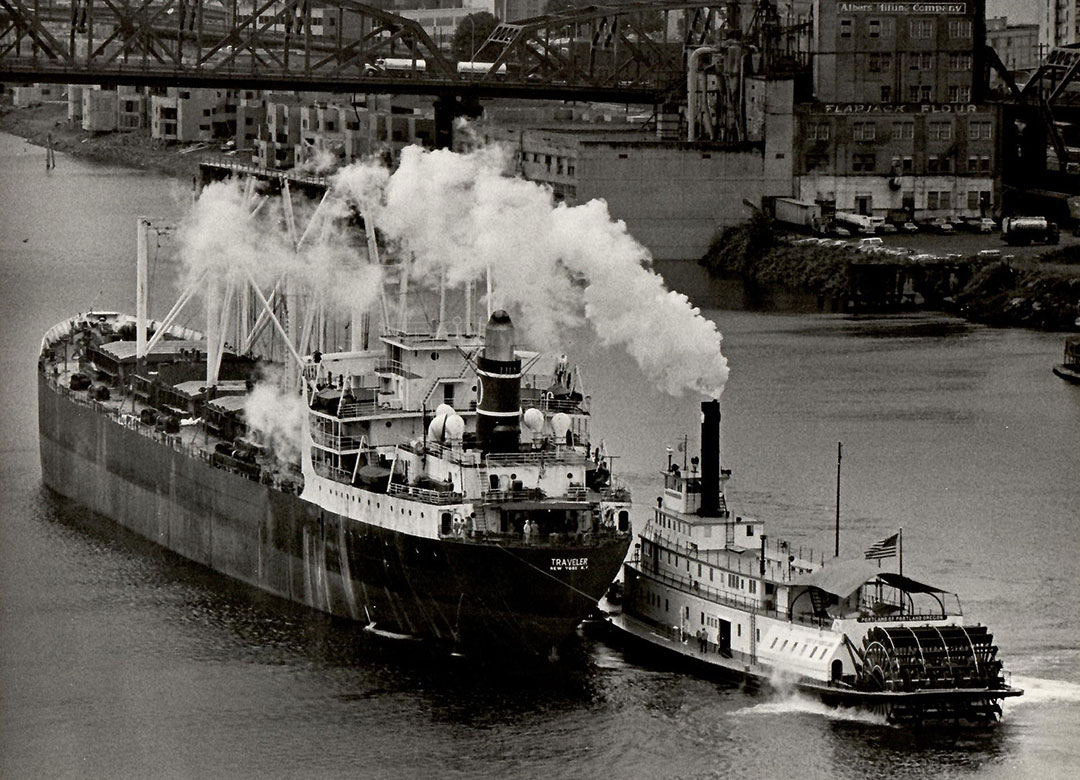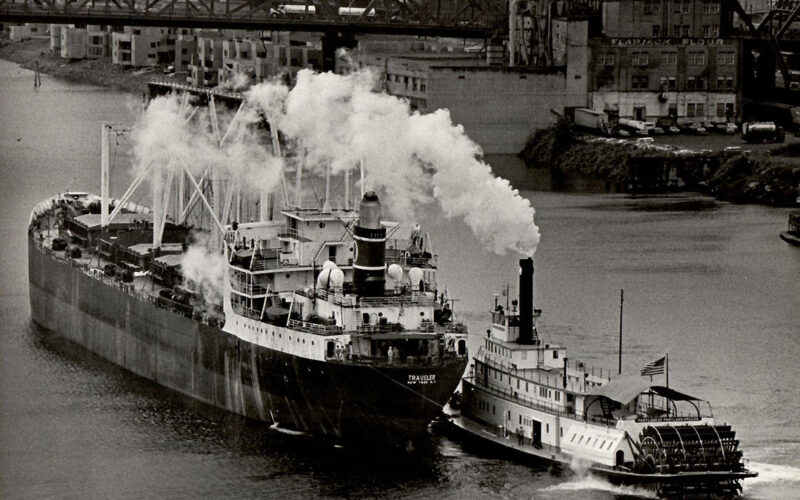
Presently resting comfortably at the Willamette River seawall in downtown Portland, Or., the sternwheeler Portland’s quiet retirement as home of the Oregon Maritime Museum belies its past as one of the most unique historic vessels afloat.
Ordered by the Port of Portland, Portland was built in 1947 at the Northwest Iron Works shipyard to replace her predecessor of the same name, built in 1919.
But unlike its predecessor, the new vessel was launched with a steel hull, and a wooden superstructure “at a time when steam paddlewheels were giving way to more modern propulsion systems,” according to the Museum’s official history of the tug.
Originally proposed as a diesel-powered, screw-driven vessel, the Columbia River Pilots Association requested that it be reconfigured with more traditional propulsion and “the unusual ship handling ability only a sternwheel tugs could deliver at the time. The pilots prevailed.”
As a result, Portland was launched as the last steam-powered, sternwheel tugboat built in the U.S.
Portland was operated by Willamette Tug & Barge and Shaver Transportation for more than three decades, assisting ships in docking, turning, and navigating the narrow bridge spans on the Willamette River. Her massive rudders and backing power were essential for moving loaded ocean-going ships.
The powerful tug proved its worth in 1952 when the heavily-laden Standard Oil tanker S.G. Follis, inbound to Portland, ran firm aground on the Willamette River at the Sauvie Island dike. A trio of other tugs strained to free the tanker to no avail. With lines fast to the tanker, the wash from Portland’s paddle wheel in full reverse loosened the sand under S.G. Follis, allowing the stranded ship to work free.
By the late ‘70s, the Port of Portland was regularly being visited by newer generation containerships equipped with bow thrusters that reduced the need for help from tugs, as well as supertankers from Alaska that proved too large for the sternwheeler to assist.
Shaver commissioned the construction of a new tractor tug bearing the same name. The new vessel featured z-drive propulsion technology, making it the first tug of its kind on the West Coast so equipped.
After almost 30 years of service, in 1981, the decision was made to retire Portland. The veteran tug’s final job was assisting the Shaver Transportation Columbia and its successor, the new tractor tug Portland, in easing the tanker Mobil Arctic into Swan Island Drydock No. 4 for repairs.
The Port Commission was reluctant to send Portland to the ship breakers and tried in vain to sell her to commercial interests. She was tied-up for some years at the Port’s Terminal One, quietly falling to pieces. Her wheelhouse and ‘Texas’ house were removed to sit on the dock exposed to the elements, while the wooden superstructure rotted down to the steel housing of the machinery space and long tendrils of marine growth streamed below the waterline.
In 1991, the crumbling Portland was deeded to the Oregon Maritime Museum, which acted quickly to raise $700,000 in funds from the Port of Portland and several Trusts to restore the once-proud sternwheeler.
“It was the production company of the 1994 movie Maverick with James Garner, Jodie Foster, and James Coburn that really saved the steamer,” according to Rob Rich, Shaver Transportation’s VP of marine services.
“They built a huge old riverboat façade and operated the vessel below Bonneville Dam in the West end of the Gorge to shoot the movie.
“After production, the boat was restored to its current livery, giving a huge boost to the efforts of scores of volunteers giving thousands of hours of work to bring her back to her current fully operational state.”
Their dedicated work to restore the venerable Portland was appropriately rewarded in 1997 when the sternwheeler was added to the National Registry of Historic Places.

